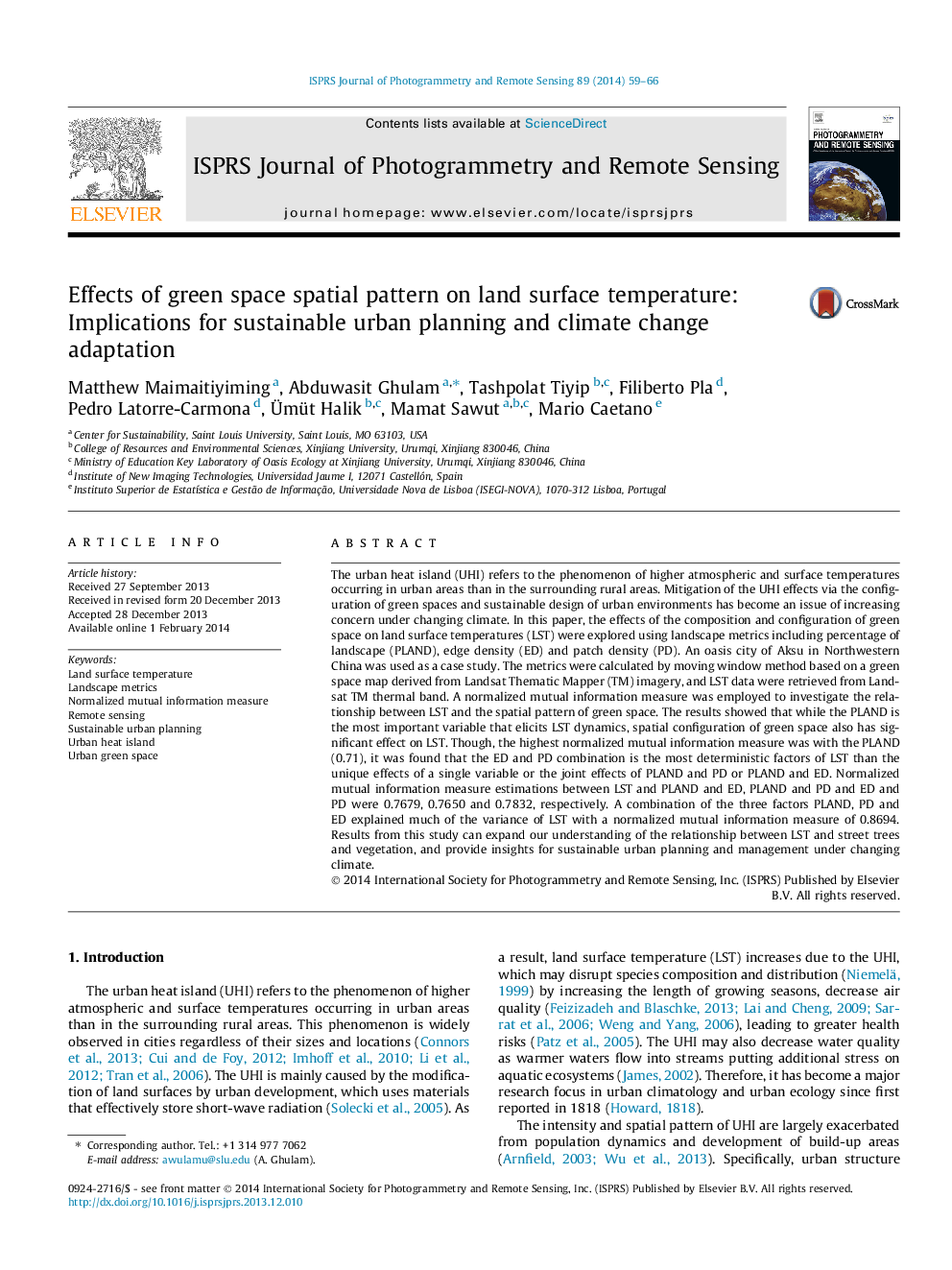| کد مقاله | کد نشریه | سال انتشار | مقاله انگلیسی | نسخه تمام متن |
|---|---|---|---|---|
| 555661 | 1451285 | 2014 | 8 صفحه PDF | دانلود رایگان |
The urban heat island (UHI) refers to the phenomenon of higher atmospheric and surface temperatures occurring in urban areas than in the surrounding rural areas. Mitigation of the UHI effects via the configuration of green spaces and sustainable design of urban environments has become an issue of increasing concern under changing climate. In this paper, the effects of the composition and configuration of green space on land surface temperatures (LST) were explored using landscape metrics including percentage of landscape (PLAND), edge density (ED) and patch density (PD). An oasis city of Aksu in Northwestern China was used as a case study. The metrics were calculated by moving window method based on a green space map derived from Landsat Thematic Mapper (TM) imagery, and LST data were retrieved from Landsat TM thermal band. A normalized mutual information measure was employed to investigate the relationship between LST and the spatial pattern of green space. The results showed that while the PLAND is the most important variable that elicits LST dynamics, spatial configuration of green space also has significant effect on LST. Though, the highest normalized mutual information measure was with the PLAND (0.71), it was found that the ED and PD combination is the most deterministic factors of LST than the unique effects of a single variable or the joint effects of PLAND and PD or PLAND and ED. Normalized mutual information measure estimations between LST and PLAND and ED, PLAND and PD and ED and PD were 0.7679, 0.7650 and 0.7832, respectively. A combination of the three factors PLAND, PD and ED explained much of the variance of LST with a normalized mutual information measure of 0.8694. Results from this study can expand our understanding of the relationship between LST and street trees and vegetation, and provide insights for sustainable urban planning and management under changing climate.
Journal: ISPRS Journal of Photogrammetry and Remote Sensing - Volume 89, March 2014, Pages 59–66
